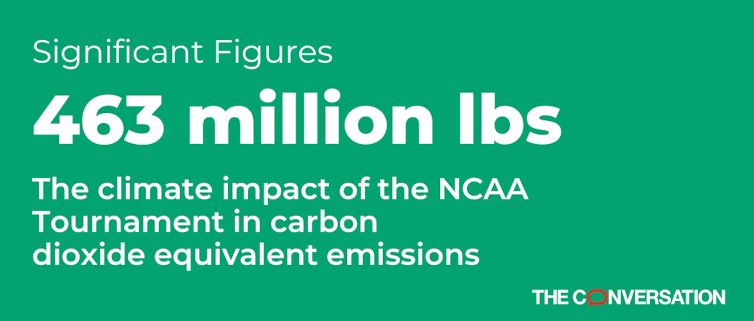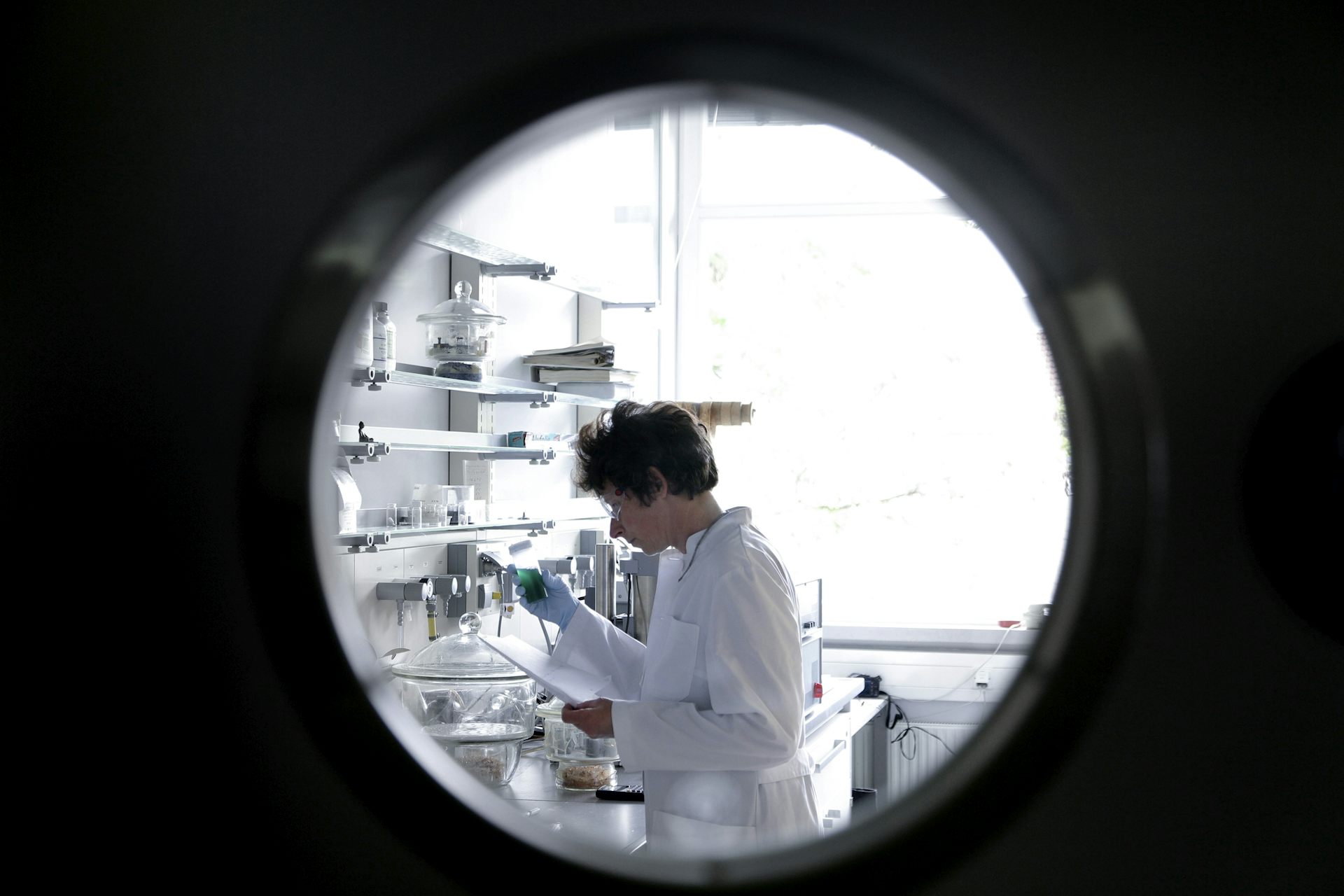What's the carbon footprint of March Madness?
All those Cinderella stories, buzzer-beating finishes and wild cheering sections have a high price tag – for the climate.


March Madness means 68 teams vying to become champion, Cinderella runs for a few underdogs and big business for the NCAA, which earns 85% of its annual operating budget during the men’s basketball tournament.
But all of that comes at a tremendous cost: An estimated 463 million pounds (210 million kilograms) of carbon dioxide equivalent emissions are released into the atmosphere during the three-week event. That’s similar to all the emissions of a large university – such as 2019 champion University of Virginia – for an entire year.
These greenhouse gas emissions warm the planet, contributing to heat waves, sea level rise and extreme weather. Carbon dioxide equivalent is a way of measuring the impact of several different greenhouse gases at once.
Crunching carbon for large-scale event
A colleague, Alex Cooper, and I came up with this figure based on data for the 2019 NCAA Tournament.
Past research on the carbon footprint of sporting events has primarily focused on one-city events, such as the Football Association Challenge Cup in the U.K. and centralized events like the Olympics. Little prior research has sought to determine the environmental impact of a large-scale sporting event like the NCAA’s men’s basketball tournament.
In addition, when sports organizers do calculate and report emissions for their events, they typically only report what happens at their facility during the event. They don’t consider the environmental impact, for example, of travel to and from the event.
So, we wanted to know, what’s the carbon tally for a huge and popular event like March Madness?
For our peer-reviewed study, which was published in October 2021 in the Journal of Cleaner Production, we aimed to estimate the carbon emissions for all the activities that go into running a massive basketball tournament that takes place in multiple cities across the country in a short span of time. While our estimates are based on 2019, we believe that tournament-generated emissions are comparable to other years, including 2023.
We looked beyond facilities to consider team and fan flight and automobile travel, facility operations, food consumption, waste generation and lodging for everyone based on each team’s progression through the 2019 tournament. We used attendance estimates to determine the impact of hotel stays, fan and team air and automobile travel, waste generation, food consumption and sport facility operations to form our carbon emission model.
Based on our model, we found that this resulted in 463 million pounds of CO2 equivalent emissions. That’s about 1,100 pounds (499 kilograms) for every player, coach and fan who attends. That amount is the same as driving over 1,200 miles (1,930 kilometers) in a typical sedan.
The biggest source of emissions by far was, as you might expect, fan and team travel, which accounted for about 79.95% of the total. The next-largest was hotel stays at 6.83%, followed by food at 6.37%, stadium operations at 5.9% and general waste at 0.95%.
What surprised us most was that the category of travel as a share of the total was lower than in previous studies that analyzed the carbon footprint of sporting events. But that was primarily because, unlike in those other studies, we considered many other aspects of the event, such as lodging, food and waste.
Ways to mitigate impact
So what can the organizers of March Madness – or any tournament, really – do to reduce the carbon footprint?
Since travel makes up so much of that footprint, targeting emissions from long-distance travel, such as flights, may be one of the most effective ways to lower the event’s overall impact, as other researchers have noted.
While travel can’t be completely eliminated for a tournament like the NCAA’s, organizers could consider more regional placements to reduce the distances fans and teams must travel. For example, in 2019, Mississippi State, Liberty, Virginia Tech, Saint Louis and Wisconsin all traveled to San Jose, California. The idea would be for more games to take place regionally to decrease travel distances. This would not only reduce carbon emissions but could also increase profits by making it easier for more fans to attend.
And when evaluating host cities and sites, the NCAA could consider local policies that encourage sustainable hotel operations. For example, during the 2019 tournament, California host sites had more energy-efficient hotel operations, thus reducing the second-highest contributor to overall emissions. The same could be said about selecting arenas and sport facilities that are energy efficient.
March Madness brings tremendous value and enjoyment to college basketball fans throughout the country. While its carbon footprint can never be eliminated, there are ways to reduce its overlooked environmental cost.
Brian P. McCullough does not work for, consult, own shares in or receive funding from any company or organization that would benefit from this article, and has disclosed no relevant affiliations beyond their academic appointment.
Read These Next
The world risks forgetting one of humanity’s greatest triumphs as polio nears global eradication − 7
Polio may finally be defeated in the next 5 years. Will the world recognize what an extraordinary achievement…
Understanding climate change in America: Skepticism, dogmatism and personal experience
Real skeptics study the evidence and ask questions, rather than taking political dogma on faith. Experiencing…
What are gas stove manufacturers trying to hide? Warning labels
The gas industry is opposed to labels that warn consumers of the potential harms of gas stoves.






